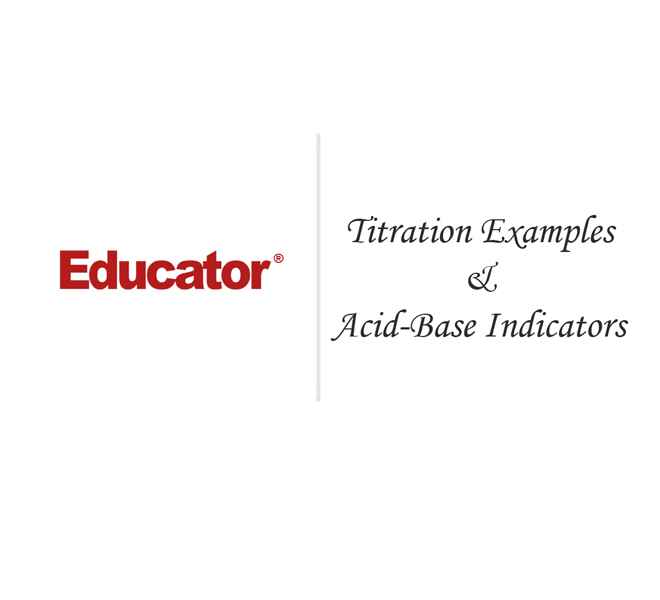Connecting...

This is a quick preview of the lesson. For full access, please Log In or Sign up.
For more information, please see full course syllabus of AP Chemistry
For more information, please see full course syllabus of AP Chemistry
AP Chemistry Titration Examples & Acid-Base Indicators
Lecture Description
This lecture contains three examples of titration problems. The first example requires finding the pH of the solution at the midpoint of the reaction between hydrocyanic acid and sodium hydroxide. The second example determines the Kₐ of a weak, unknown acid by dissolving it in water and titrating it with sodium hydroxide. The third example shows the titration of an ammonia solution with hydrochloric acid. The lecture ends with an overview of acid-base indicators, which change color at the equivalence point of a titration. Most are organic molecules that change color when deprotonated. Phenolphthalein is colorless when protonated (in the presence of an acid) and pink when deprotonated (in the presence of a base).
Bookmark & Share
Embed
Share this knowledge with your friends!
Copy & Paste this embed code into your website’s HTML
Please ensure that your website editor is in text mode when you paste the code.(In Wordpress, the mode button is on the top right corner.)
×
Since this lesson is not free, only the preview will appear on your website.
- - Allow users to view the embedded video in full-size.
Next Lecture
Previous Lecture










































 Answer Engine
Answer Engine




1 answer
Sat Dec 28, 2019 12:58 AM
Post by Owen Qu on December 27, 2019
Can we use the henderson-hasselbalch equation to solve example 2?
If Ka = 10^-pKa like how pH is, then can't we derive an equation from the henderson-hasselbalch equation to solve for Ka?
If pH = pKa - log(A-/HA), then pKa should equal 10^-6.1 + log(0.00935/0.01098). Afterwards, inputting it into Ka = 10^-pKa should give Ka. Does this equation work? I tried it a couple times but it kept on giving me the wrong answer